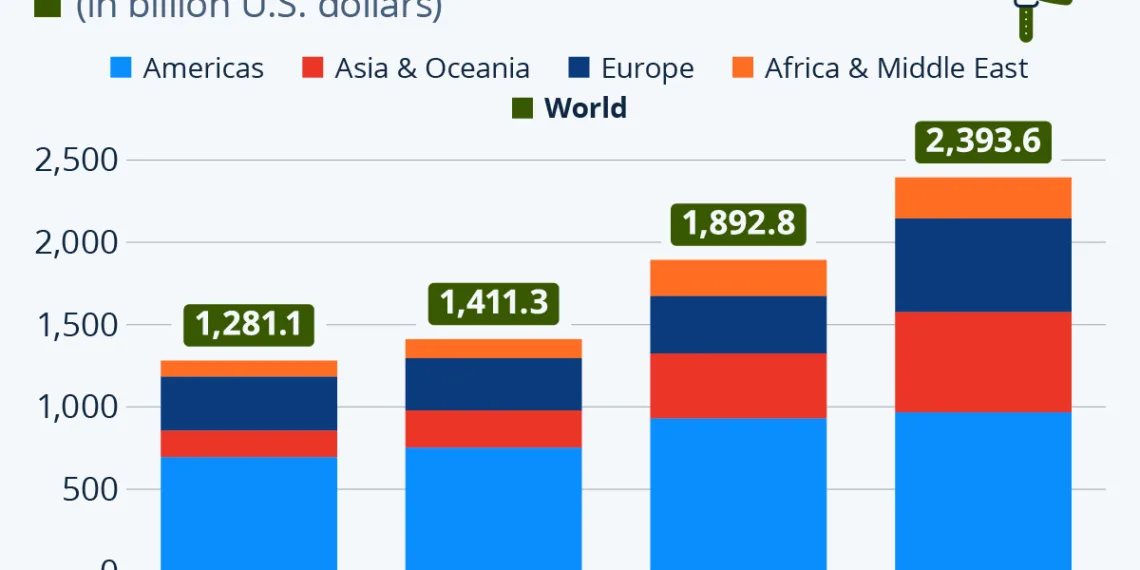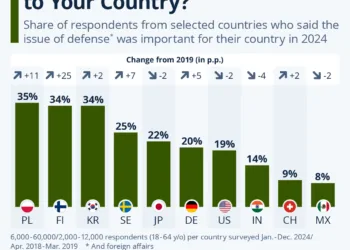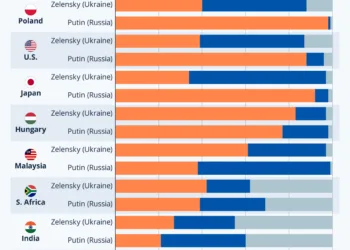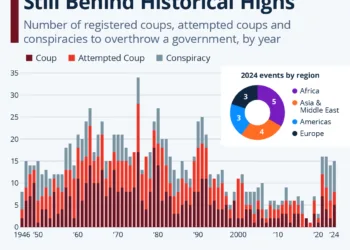The Surge of Global Military Spending Since the Early 1990s
In recent years, the landscape of global military spending has undergone remarkable changes, with expenditures nearly doubling since the early 1990s. This substantial increase raises questions about the underlying motivations and implications for international relations, defense strategies, and global security.
Historical Overview of Military Expenditure
According to data from the SIPRI Military Expenditure Database, global military spending was approximately $1.3 trillion in 1993. Fast forward to 2023, and this figure surged to nearly $2.4 trillion. Such an increase indicates a significant shift in how nations prioritize defense and military readiness in an increasingly complex geopolitical environment.
Growth Trajectories by Region
Exploring military spending trends by region provides a clearer understanding of where the increases are most pronounced:
-
Asia and Oceania: This region has emerged as the leading driver of overall military expenditure growth, with an astonishing 277% rise in spending from 1993 to 2023. Factors contributing to this surge include rising tensions in the South China Sea, the North Korean threat, and strategic realignments in response to regional security challenges.
-
Africa and the Middle East: This area recorded a 154% increase in defense spending during the same time frame. The motivations behind this growth include ongoing conflicts, counter-terrorism efforts, and the need to build stronger military forces to maintain stability.
-
The Americas: Despite the overall doubling of military expenditure, the Americas remain the highest spending region, with total expenditures reaching $967 billion in 2023. The considerable budget reflects not only the military commitments of the United States but also a shift towards modernization of forces and new defense initiatives.
ADVERTISEMENT - Europe: The data indicates that military spending in Europe has been steadily rising, primarily due to the ramifications of the ongoing war in Ukraine. This conflict has prompted nations to bolster their defense capabilities, resulting in heightened military budgets as a response to perceived threats.
Key Players in Military Spending
The distribution of military spending reveals the dominance of a few key players on the global defense stage:
The United States
The U.S. remains the largest military spender in 2023, with expenditures reaching $916 billion, accounting for 37% of global military spending. This significant investment reflects the country’s ongoing commitment to maintaining its military dominance and addressing emerging threats.
China
Following the U.S., China stands as the second-largest military spender, investing $296 billion in its defense efforts. This growth is attributed to China’s aspirations for greater regional influence, modernization of its armed forces, and enhancements in technological capabilities, particularly in areas such as cyber warfare and missile systems.
Russia
In the wake of geopolitical tensions, particularly regarding Ukraine, Russia invested $109 billion in its military in 2023. This marks a strategic focus on expanding capabilities and asserting its presence, underlining the impacts of regional conflicts on defense budgets.
Other Notable Spenders
- India: With a military budget of $83.6 billion, India ranks among the top five global military spenders, driven by threats from neighboring countries and a focus on defense modernization.
- Saudi Arabia: Ranking fifth, Saudi Arabia’s military expenditure of $75.8 billion is primarily influenced by regional conflicts and the need to secure its borders against various threats.
The Emergence of Ukraine
Remarkably, Ukraine has positioned itself as the eighth-largest military spender globally in 2023, with a defense budget of $64.8 billion. This dramatic increase emphasizes the urgent need for military capabilities resulting from the ongoing conflict with Russia, showcasing how war can dramatically reshape a nation’s defense spending priorities.
Implications of Rising Military Expenditure
The near doubling of global military spending since the early 90s signals potentially transformative implications for both domestic and international politics. The increased budgets reflect not only national security concerns but also the complexities of global power dynamics, alliances, and potential conflicts.
Conclusion
The upward trajectory of military spending reflects deep-rooted issues concerning national security, geopolitical stability, and the global balance of power. As nations continue to adjust their strategic approaches, the implications ripple across borders, influencing everything from diplomacy to trade and international conflict resolution.











